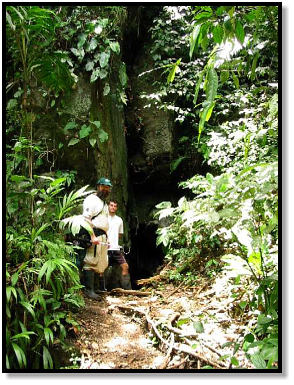

COSTA RICA
April 2002

3 of 7


COSTA RICA
April 2002


3 of 7
Early on the second day we leave the dock at Caño Palma for the 20-minute boat ride to Tortuguero National
Park, joined by the station manager Paul and his assistant Mario. Overhead we see large Iguanas basking high in
trees on bare branches that extend over the water.
We arrive at the park and walk the short rainforest trail that leads to the beach. Ron and I lag behind to take
photos of this great tree, with its muscular buttress roots.
Meanwhile, as we’re posing and putzing around, Paul and Mario stroll ahead and encounter this Parrot Snake
gliding over a branch directly above the trail.
Paul reaches up and grabs, bravely taking a hit from this rear-fanged colubrid, which turns out to be an
insignificant bite (but of course, he knew it would be).
Despite the fearsome threat display, this guy is basically all bluff (unless you happen to be a lizard). He quickly
calms down and becomes easily handleable. We’re told they are the most commonly seen snakes in the area, except
maybe for Fer-de-Lances.
Farther up the trail we look in the folds of some enormous buttress roots and see this small group of bats
looking back down at us.
As we emerge onto the beach we see the tractor-tread of a Leatherback Turtle, Dermochelys coriacea, that had
evidently come ashore the night before. These beaches are among the most famous in the world for nesting sea
turtles of several species (giving the place it’s name; Tortuga is Spanish for “turtle”). By the first full moon in June
they will be coming ashore in the hundreds, but a few solitary individuals are already arriving. We make a point of
covering the tracks to avoid leaving signs for potential poachers.
In the rainforest we hear a troop of howler monkeys crashing through the high canopy, scattering leaves as
they forage for food. That’s how it is with monkeys; you hear them before you see them, if you see them at all. First,
there is the distant sound of branches swaying and rustling, something unseen coming in your direction. Then you
see leaves falling, and if you look carefully, way up on top, you might catch a glimpse of dark shapes moving along
the larger branches.
Of course, if they are howlers, they often announce their presence with, uh, howls, especially at dawn and at
dusk. We heard and saw them every day of our trip, even managed to get into an extended call and response
conversation. I had no idea what I was saying, but apparently the monkeys found it entertaining.
This youngster unexpectedly comes to an opening in the far distance, so I take a blurry shot of him hanging by
the tail. Something we rarely see in New Jersey.
As previously mentioned, the rainforest interior is quite dark and shady, but every so often there is a burst of
sunlight in a small opening. And in just about every sunny patch, there you’ll find a Whiptail, nervously skittering
about looking for something to eat. This lizard stops just long enough for a quick photo, then it’s back to “hurry,
hurry, I’m hungry.” So are we, for that matter, so it’s back to Caño Palma for lunch and siesta before an afternoon
hike at the the Cerro.
Late afternoon we take a boat across the river to hike a trail at the base of the big hill that looms above the
otherwise flat terrain. We’re looking for diurnal species, such as Vine Snakes, so we keep glancing at the trees to the
side of the trail, scanning for something that looks like not-quite-a-vine. This results in one of the best and certainly
most improbable finds of the trip.
Among the zillions of trees in this dense forest, what are the odds of finding an arboreal snake mixed in with
zillions of vines? And what are the odds that you will recognize it when you see a slender bit of “something” tangled
among the lianas? That it will be not too high, and not too far from the trail? What are the odds that it will be over six
feet long, with only four inches of tail visible on your side of the tree, and the only reason this lightning-fast snake
isn’t long gone, zipping through the branches, is because he’s on the other side of the tree, and he doesn’t see you?
Well, as I walk ahead, Ron stops and says, “I don’t know what it is, but it’s colubrid.” I look at what he’s
pointing to, and there, insinuated in the lianas, is a few inches of something that’s not-quite-a-vine. I recognize the
yellow and black, and shout, “Spilotes!”, then reach up and grab. The four inches suddenly comes to life, and from
around the tree comes the other six feet, mouth open, neck flared vertically, striking fiercely like the apex predator he
is in these parts.
We pull him down from the tree, watch him lunge at my body parts while I (almost) avoid getting bit, then
settle down to marvel at what we’ve found. Certainly one of our major highlights, a target species I didn’t really
expect to see, much less have in hand!
Still stoked from our encounter with the Spilotes we walk on towards a tiny cave at the foot of the Cerro.
Peeking in we can see a few vampire bats, and in the rock crevices outside we find a Tropical Night Lizard,
Leidophyma flavimaculatum. Heading back we notice a tree frog tucked away and sleeping under a leaf, and darting
ahead of us in a patch of sunlight is a juvenile Basilisk, this time a different species, the Two-Lined Basilisk.
And of course, amidst all the shades of green are brilliant Dart Frogs and gaudy beetles broadcasting their not-
so-subtle warning colors.
We return to the field station and decide to prowl along the river banks by canoe. We are treated by a troop of
spider monkeys, who spend a good 15 minutes feasting on palm fruit right out in the open, just for our benefit.
Baby Emerald Basilisks are basking on logs in the river. As soon as we approach, they run across the water in
perfect National Geographic form, legs windmilling, bodies upright, gone before the splash of their footfall hits the
surface of the water.
Later that night we cruise the river again, shining caiman, frogs, and basilisks; even manage to catch a baby
basilisk asleep (how else?). It promptly jumps into our canoe and returns with us to the field station, where we pack
our bags for a 6:00 am departure from Caño Palma.
Two-Lined Basilisk
Basiliscus vittatus
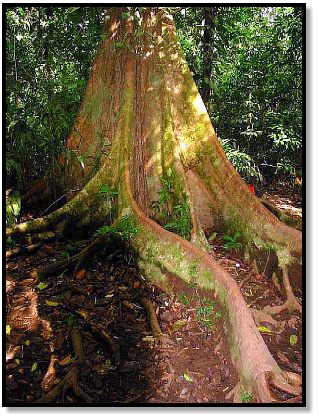

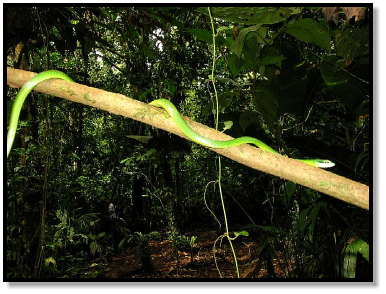
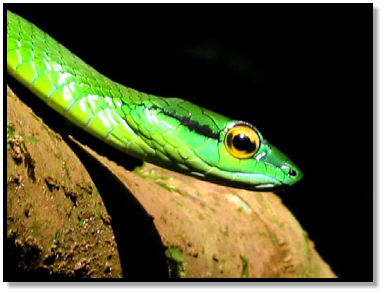
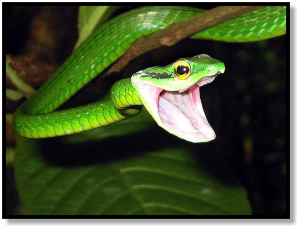
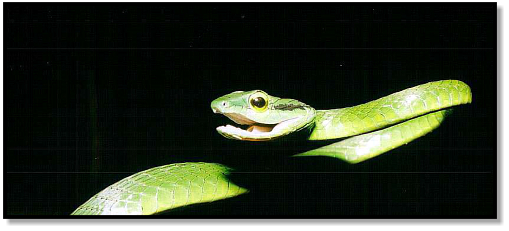
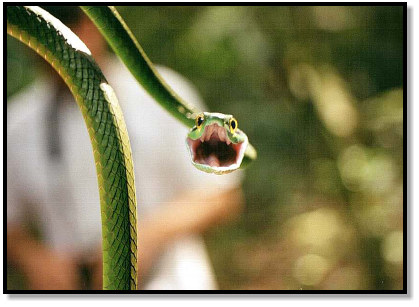

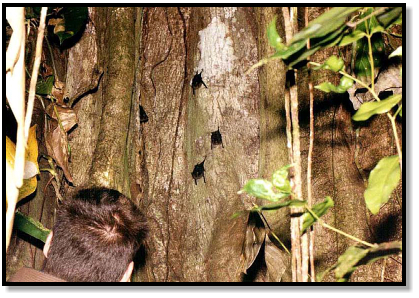

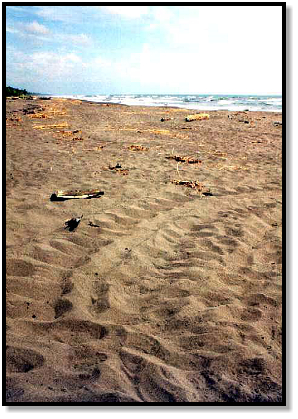
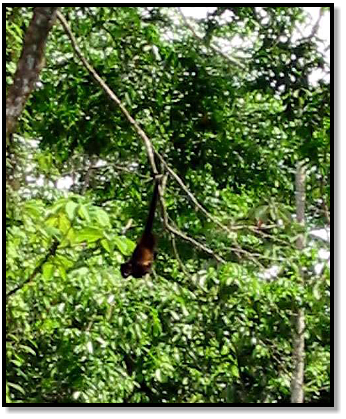

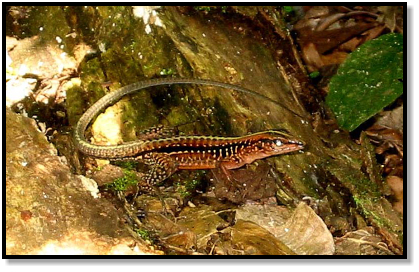
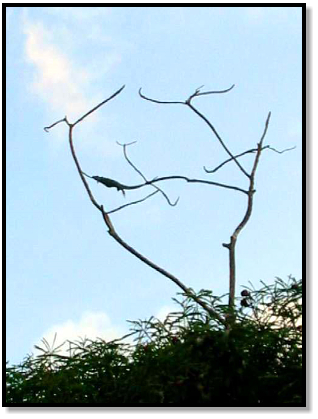
Parrot Snake
Leptophis ahaetulla
Central American Whiptail
Ameiva festiva
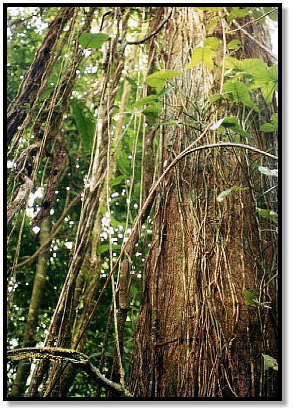
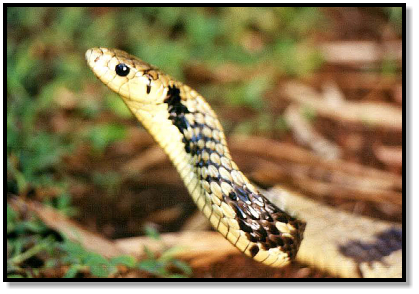
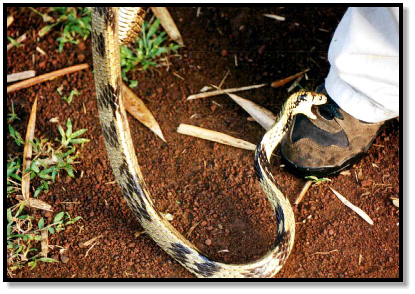
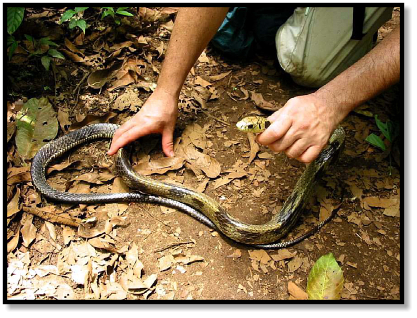
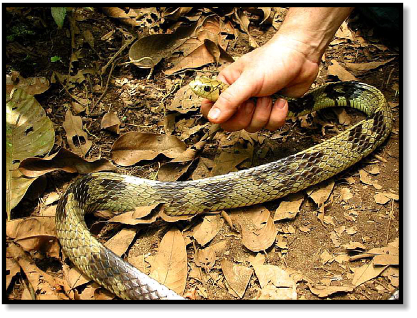
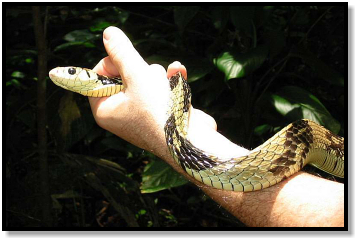
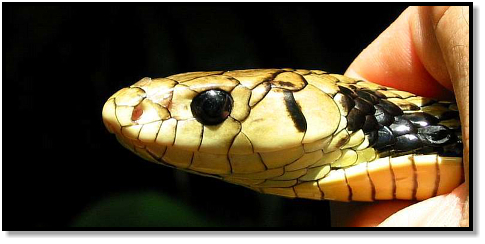
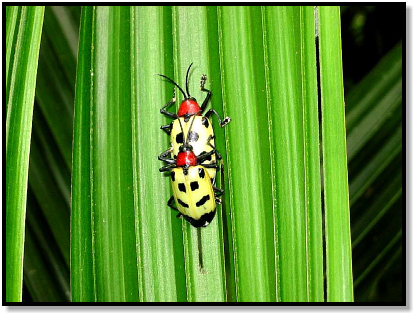
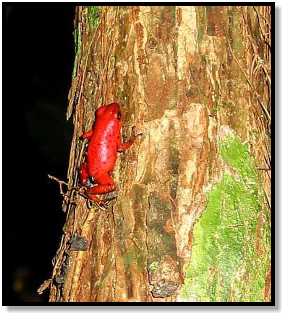


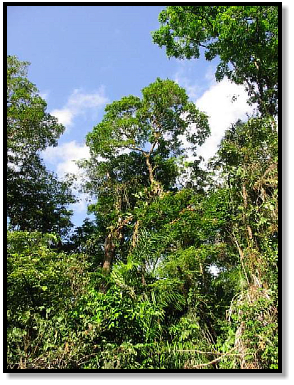
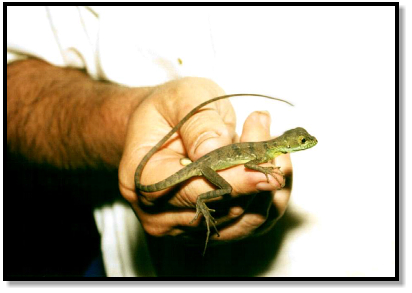
Drab Tree Frog (?)
Smilisca sordida
Tiger Rat Snake
Spilotes pulattus
